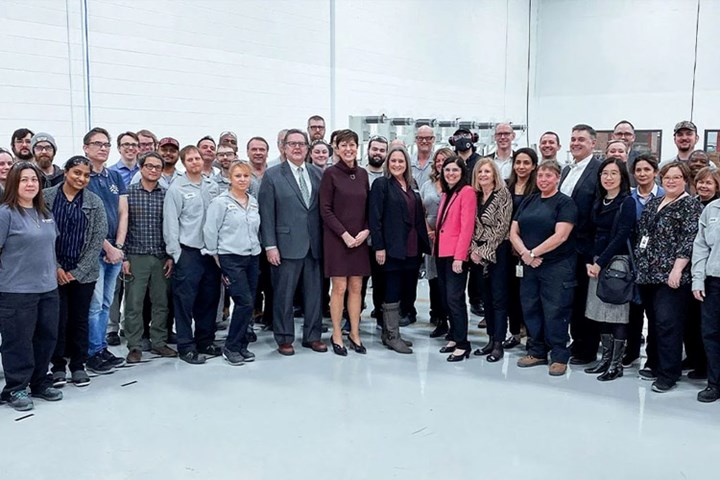RAMPF Composite Solutions receives $2.3 million Canadian government funding
The aerospace company aims to invest in automation and digitization, hire new employees and expand into emerging markets.

Photo Credit: RAMPF Composite Solutions
RAMPF Composite Solutions (Burlington, Ontario, Canada) has received $2.3 million from the Federal Economic Development Agency for Southern Ontario (FedDev Ontario) to foster the sustainable economic growth of Ontario’s aerospace sector.
In addition, the international RAMPF Group based in Grafenberg, Germany, which RAMPF Composite Solutions is part of, has announced that it will match the $2.3 million investment by FedDev Ontario over the next two years. With a total investment sum of $4.6 million, RAMPF Composite Solutions is pursuing three main objectives:
- Increase productivity by automating repetitive tasks
- Reduce cycle times to get products to customers faster
- Support higher production volumes
Larry Fitzgerald, CEO of RAMPF Composite Solutions, says, “[This investment] will allow us to win more business in our existing markets and take advantage of new exciting markets such as urban air mobility, unmanned aerial vehicles and electric aircraft. At the same time, we will reduce our environmental footprint and create a minimum of 15 additional new jobs in Burlington. ​​​​​​By investing in automation and digitization, we will position RAMPF Composite Solutions to win new business as airframe manufacturers are increasing production rates and looking to develop new aerospace solutions that take advantage of lightweight composites. We are also proud that this investment will enable a future with less CO2 emissions — by designing and manufacturing lightweight composite components and structures, we are accelerating a reduction in fuel consumption today and creating solutions for hybrid and electric transportation in the future.”
Related Content
-
The potential for thermoplastic composite nacelles
Collins Aerospace draws on global team, decades of experience to demonstrate large, curved AFP and welded structures for the next generation of aircraft.
-
Plant tour: Aernnova Composites, Toledo and Illescas, Spain
RTM and ATL/AFP high-rate production sites feature this composites and engineering leader’s continued push for excellence and innovation for future airframes.
-
Industrializing additive manufacturing in the defense/aerospace sector
GA-ASI demonstrates a path forward for the use of additive technologies for composite tooling, flight-qualified parts.
.jpg;width=70;height=70;mode=crop)


